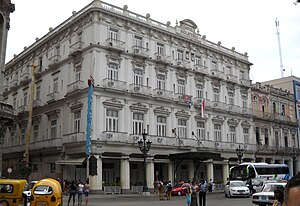 |
| Havana Cuba 1950's Vintage American Cars |
Havana City is the most populated city in Cuba and has 6 times as many Cubans as the country's next biggest city, Santiago de Cuba. Havana is a city and a much higher class by itself when it comes to Cuba. No other historical city in the Americas has so many contradictions that characterize Havana Cuba, especially since the opening of the Caribbean Hotel resort and tourist market that saw the opening of mass tourism and the introduction of a dual currency system in the capital Havana.
Havana's growing middle class, most of whom have made their money through family members living abroad and the opening and influx latest wave of tourism, shop in the brand-new Cuban shopping malls, while just down the road lineups of Cubans holding their monthly ration cards form outside the local shops.
HAVANA ARCHITECTURE
Restoration of Havana architectural projects have revitalized some of the finest colonial architecture in Havana and the Caribbean to its original Spanish splendor, even as other poverty stricken Havana overcrowded and dirty neighborhoods wait for their first coat of paint since the early 1990s. There is a sense that Havana is on the move, with tourist money pouring in, new nightspots appearing regularly and an increasing variety of products in shops that not long ago either didn't exist or stood empty. Yet on the other hand, time stands still, or even goes backwards, in a city where 1950s Chevrolet, Buick's and Oldsmobile's ply the roads, locals fish from fishing boats floating near the aging Malecon and many people seem to spend most of the day in the street or on their crumbling nineteenth-century doorsteps. Havana City is one of Cuba's must visit attractions.














